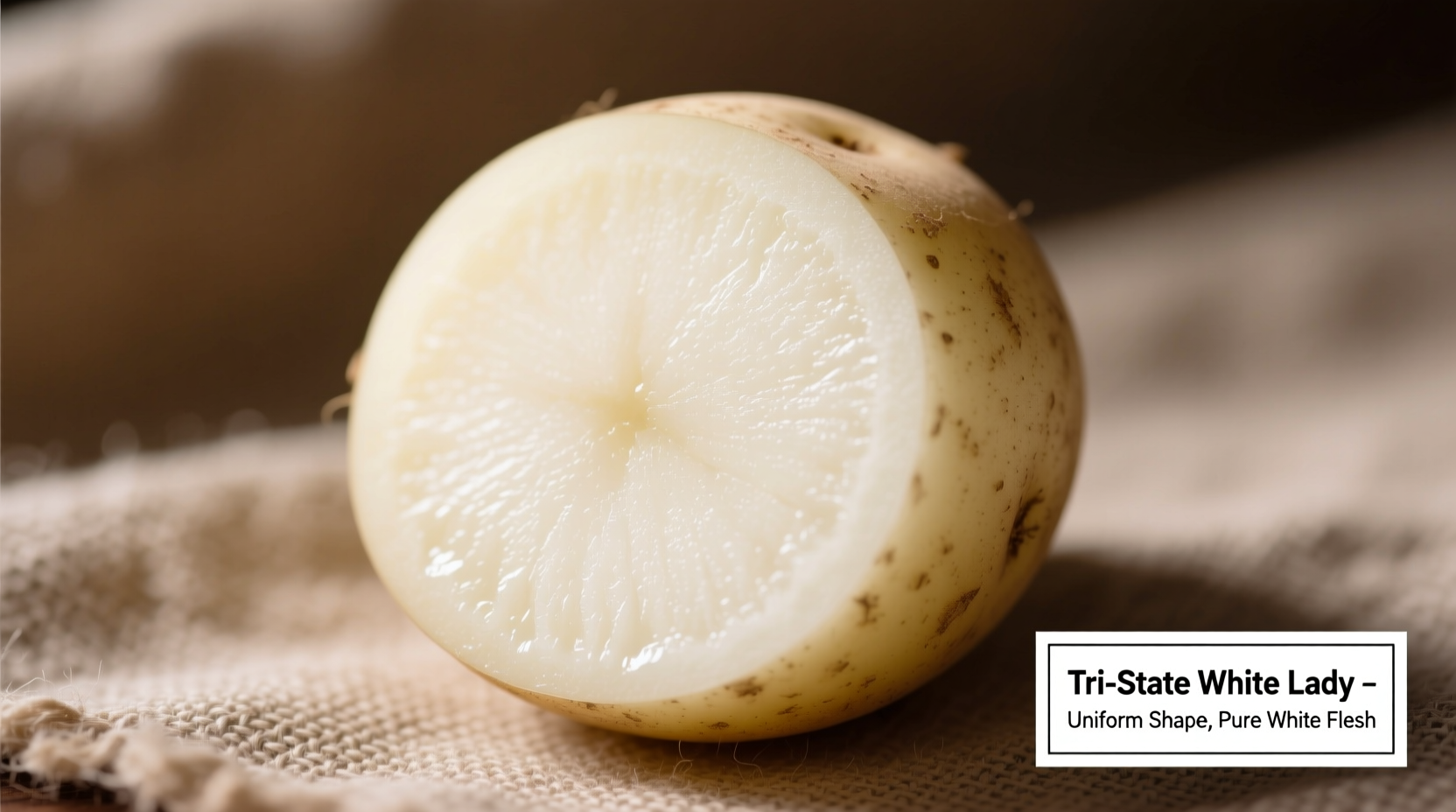When farmers and processors search for "potato pc ttwl," they're seeking critical information about this specific processing cultivar's performance characteristics. This comprehensive guide delivers exactly what agricultural professionals need to make informed decisions about incorporating TTWL into their crop rotation or processing pipeline.
Understanding the Tri-State White Lady Potato Variety
The Tri-State White Lady (TTWL) represents a significant advancement in white potato breeding specifically designed for the frozen french fry market. Developed through a collaborative effort between agricultural researchers in Maine, New Brunswick, and Prince Edward Island, this cultivar addresses key challenges faced by potato processors seeking consistent quality and yield.
Unlike traditional russet varieties that dominate the french fry market, TTWL offers a white flesh alternative that maintains color stability during processing—a crucial factor for manufacturers targeting specific market segments. Its development timeline reflects careful selection for processing characteristics:
TTWL Development Timeline
- 2010-2012: Initial cross-breeding between select white potato lines for processing suitability
- 2013-2016: Field trials across multiple growing regions to assess performance
- 2017-2019: Processing trials with major french fry manufacturers
- 2020: Official release to commercial growers
- 2021-Present: Expansion into major potato-growing regions across North America
Key Characteristics That Define TTWL's Processing Class
The "PC" in potato pc ttwl refers to Processing Class—a critical categorization system used by the potato industry to match varieties with specific end products. TTWL falls into Processing Class 2, indicating its specialization for frozen french fry production.
What makes TTWL stand out in its processing class?
- Shape consistency: Uniform tuber shape (85-90% meet french fry processing specifications)
- Dry matter content: 21-23%, ideal for low oil absorption during frying
- Sugar profile: Maintains low reducing sugars during cold storage (critical for color control)
- Yield potential: 450-500 cwt/acre under optimal growing conditions
- Storage performance: Excellent color retention after 6-8 months in standard storage

Comparative Analysis: TTWL vs. Other Processing Varieties
| Variety | Processing Class | Dry Matter % | Disease Resistance | Primary Use |
|---|---|---|---|---|
| Tri-State White Lady (TTWL) | 2 (White fry) | 21-23% | High: PVY, PLRV, Late Blight | Frozen french fries |
| Russet Burbank | 1 (Russet fry) | 22-24% | Moderate: PVY, PLRV | Frozen french fries |
| Atlantic | 3 (Chip) | 19-21% | Low: Late Blight | Chips |
| Shepody | 1 (Russet fry) | 23-25% | Moderate: PVY | Frozen french fries |
This comparison reveals why TTWL has gained traction among processors seeking white-fleshed alternatives to traditional russets. While Russet Burbank remains the industry standard for french fries, TTWL offers processors a valuable option for markets preferring white potato products.
Field Performance and Disease Resistance Profile
TTWL's disease resistance profile represents one of its most significant advantages for growers. According to the USDA Agricultural Research Service, TTWL demonstrates:
- High resistance: Potato virus Y (PVY), Potato leafroll virus (PLRV), and late blight
- Moderate resistance: Common scab and early blight
- Susceptibility: Verticillium wilt (requires crop rotation management)
These resistance characteristics translate to reduced fungicide applications—typically 20-30% fewer than susceptible varieties—making TTWL an economically and environmentally sound choice for sustainable potato production.
Optimal Growing Conditions and Management Practices
While TTWL performs well across multiple regions, understanding its context boundaries is essential for maximizing yield and quality:
Where TTWL Excels
- Cooler northern climates (Maine, Idaho, Washington, Canadian Maritimes)
- Well-drained sandy loam soils with pH 5.5-6.5
- Regions with moderate summer temperatures (below 85°F/29°C)
Where TTWL Struggles
- Hot southern climates with extended high temperatures
- Heavy clay soils with poor drainage
- Regions with high verticillium pressure without proper rotation
For optimal results, implement these management practices:
- Planting: 1,500-1,800 pounds of certified seed per acre at 12-14 inch spacing
- Fertilization: Moderate nitrogen (150-180 lbs/acre), higher potassium requirements
- Irrigation: Consistent moisture (1-1.5 inches/week), critical during tuber initiation
- Harvest timing: When skin set is complete (typically 95-105 days after planting)
Processing Performance Metrics That Matter to Manufacturers
For potato processors evaluating "potato pc ttwl," these performance metrics determine its commercial viability:
- Peel loss: 14-16% (slightly higher than russets but within acceptable range)
- Oil absorption: 16-18% (comparable to Russet Burbank)
- Color score: 3.5-4.0 on the french fry color scale (excellent for white potatoes)
- Texture: Crisp exterior with fluffy interior when properly processed
According to research from the Potato Research Center at Oregon State University, TTWL maintains consistent color through standard french fry processing protocols, eliminating the need for costly sugar management interventions required by some white potato varieties.
Practical Considerations for Growers and Processors
When incorporating TTWL into your operation, consider these practical factors:
- Contract requirements: Most processors require production contracts specifying minimum quality standards
- Storage protocols: Maintain at 45°F with 95% humidity for optimal processing quality
- Market demand: Growing interest in white potato products creates premium pricing opportunities
- Rotation planning: Minimum 3-year rotation to manage soil-borne diseases
Field trials conducted by the Canadian Potato Council demonstrate that TTWL achieves optimal processing quality when harvested at physiological maturity rather than waiting for full vine kill, a critical distinction from some russet varieties.
Future Outlook for the TTWL Potato Variety
As consumer preferences diversify in the frozen potato market, TTWL's position continues to strengthen. Market analysis from the Potato Association of America indicates growing demand for white potato french fries in certain demographic segments, particularly among consumers seeking alternatives to traditional russet products.
Breeding programs are already working on next-generation TTWL derivatives with improved disease resistance and expanded climate adaptability. For growers and processors evaluating this variety, TTWL represents a strategically valuable addition to their portfolio that addresses specific market niches while delivering reliable agronomic performance.











 浙公网安备
33010002000092号
浙公网安备
33010002000092号 浙B2-20120091-4
浙B2-20120091-4